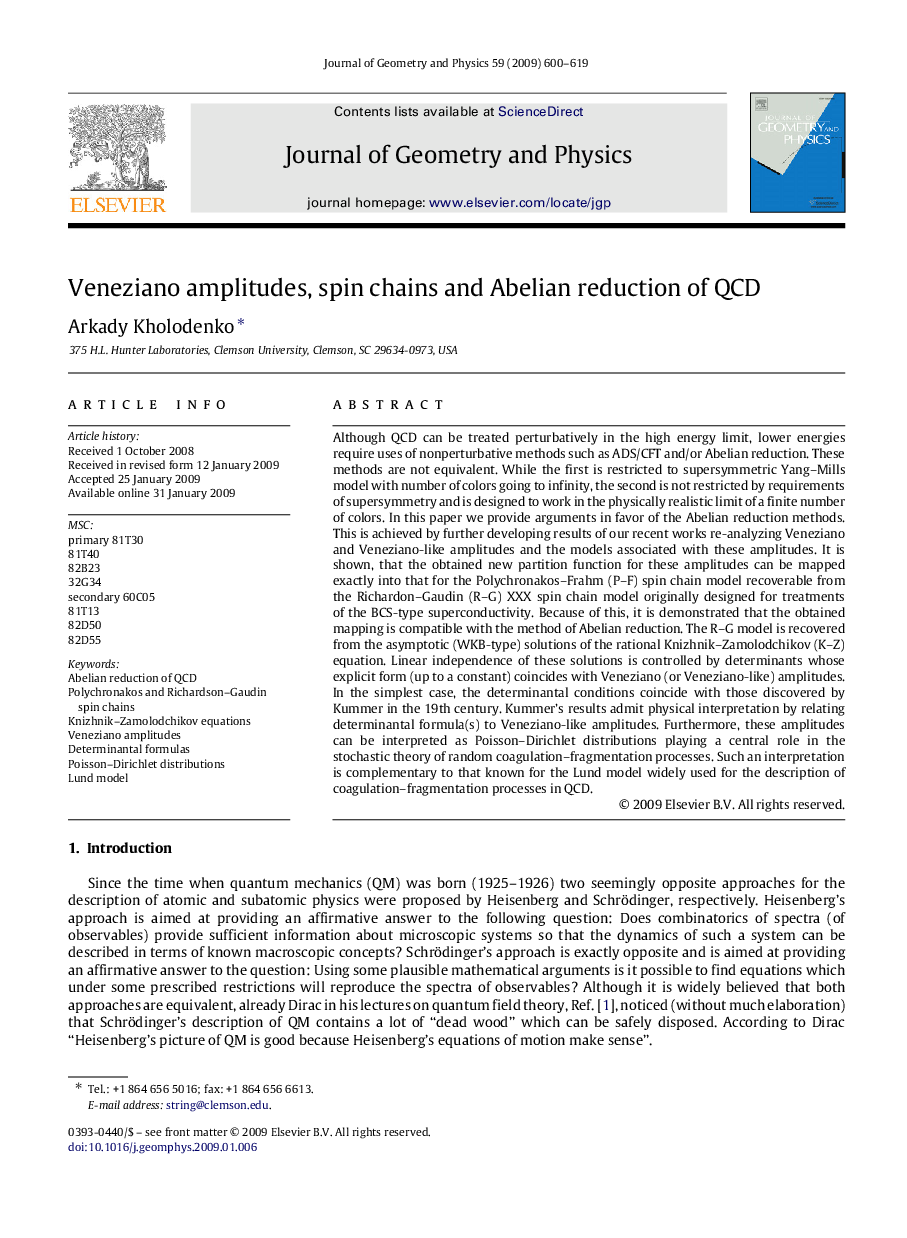| Article ID | Journal | Published Year | Pages | File Type |
|---|---|---|---|---|
| 1893360 | Journal of Geometry and Physics | 2009 | 20 Pages |
Although QCD can be treated perturbatively in the high energy limit, lower energies require uses of nonperturbative methods such as ADS/CFT and/or Abelian reduction. These methods are not equivalent. While the first is restricted to supersymmetric Yang–Mills model with number of colors going to infinity, the second is not restricted by requirements of supersymmetry and is designed to work in the physically realistic limit of a finite number of colors. In this paper we provide arguments in favor of the Abelian reduction methods. This is achieved by further developing results of our recent works re-analyzing Veneziano and Veneziano-like amplitudes and the models associated with these amplitudes. It is shown, that the obtained new partition function for these amplitudes can be mapped exactly into that for the Polychronakos–Frahm (P–F) spin chain model recoverable from the Richardon–Gaudin (R–G) XXX spin chain model originally designed for treatments of the BCS-type superconductivity. Because of this, it is demonstrated that the obtained mapping is compatible with the method of Abelian reduction. The R–G model is recovered from the asymptotic (WKB-type) solutions of the rational Knizhnik–Zamolodchikov (K–Z) equation. Linear independence of these solutions is controlled by determinants whose explicit form (up to a constant) coincides with Veneziano (or Veneziano-like) amplitudes. In the simplest case, the determinantal conditions coincide with those discovered by Kummer in the 19th century. Kummer’s results admit physical interpretation by relating determinantal formula(s) to Veneziano-like amplitudes. Furthermore, these amplitudes can be interpreted as Poisson–Dirichlet distributions playing a central role in the stochastic theory of random coagulation–fragmentation processes. Such an interpretation is complementary to that known for the Lund model widely used for the description of coagulation–fragmentation processes in QCD.
